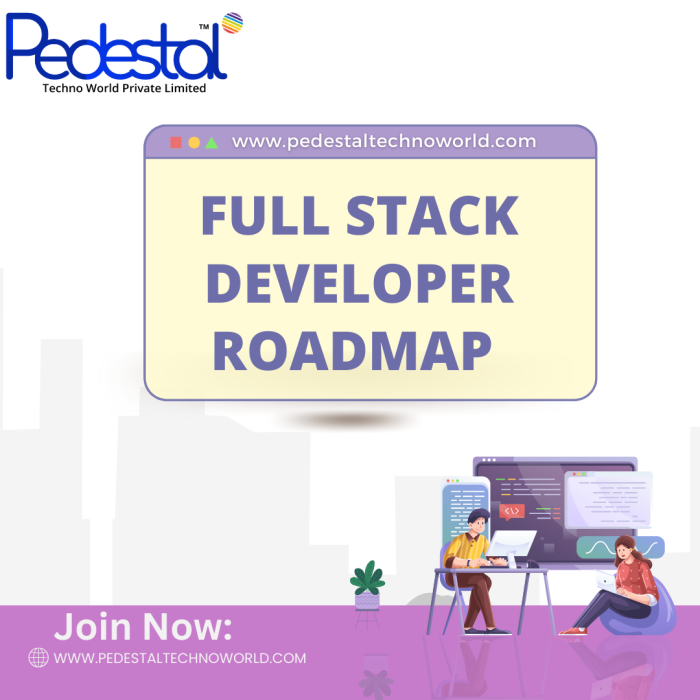If you're into tech, you've probably heard of full stack developers. But did you know they're in super high demand right now? Companies need them to take web and app development to new heights in our tech-driven world.
Starting out as a full stack developer is thrilling, especially if you're new to coding. It's like entering a giant playground where you learn everything cool that powers websites and apps. Here's why it's awesome: there are tons of jobs waiting for people who can do this because it's so important, and there are millions of developers worldwide.
his journey is all about solving problems, getting creative with projects, and preparing for a really promising career in tech. By diving into this, you're not just learning; you're launching your career in a world where tech skills matter more every day.
Who Is a Full Stack Developer?
A full stack developer is someone who knows how to build both the front and back parts of a website or web app.
They handle everything from making the interface that users see to managing databases and servers. Basically, they take care of all aspects of creating a web app from start to finish.
If you want to become a successful full stack developer and learn all the important skills and technologies, check out a full stack developer course. It gives you a complete understanding, hands-on experience, and training from experts in the industry to help you start a great career in this field.
A Complete Full Stack Web Developer Roadmap
Becoming a full stack developer means you're skilled in both front-end and back-end development, making you a versatile asset in the tech industry. Here's a simple roadmap to help you navigate your journey to becoming a full stack developer.
1. Understand the Basics
HTML/CSS: Learn how to structure and style web pages. HTML (Hypertext Markup Language) is used for creating the structure, and CSS (Cascading Style Sheets) is used for styling the web pages.
JavaScript: This is the programming language that makes your web pages interactive. Start with the basics like variables, functions, and loops.
2. Front-End Development
Learn a Front-End Framework: Popular frameworks include React, Angular, or Vue.js. These help you build complex user interfaces more efficiently.
Responsive Design: Make sure your web pages look good on all devices (desktops, tablets, smartphones) using frameworks like Bootstrap or CSS media queries.
3. Version Control
Git: Learn to use Git for version control. This helps you track changes in your code and collaborate with others. GitHub is a popular platform for hosting your repositories.
4. Back-End Development
Learn a Back-End Language: Choose a language like Node.js, Python, Ruby, or PHP. Each has its strengths, so pick one that aligns with your interests or job market demands.
Understand Databases: Learn about SQL databases like MySQL or PostgreSQL and NoSQL databases like MongoDB. You'll need to know how to store, retrieve, and manipulate data.
5. Server Management
Basic Linux Commands: Many servers run on Linux, so knowing basic commands is helpful.
Server-Side Frameworks: Depending on your chosen back-end language, learn frameworks like Express.js (Node.js), Django (Python), Ruby on Rails (Ruby), or Laravel (PHP).
6. APIs and Authentication
RESTful APIs: Learn how to build and consume RESTful APIs. These allow different software applications to communicate with each other.
Authentication and Authorization: Understand how to implement user authentication and manage permissions using tools like JWT (JSON Web Tokens) or OAuth.
7. DevOps Basics
Continuous Integration/Continuous Deployment (CI/CD): Familiarize yourself with tools like Jenkins, Travis CI, or GitHub Actions to automate testing and deployment.
Containerization: Learn about Docker and Kubernetes to create and manage containerized applications.
8. Practice and Projects
Build Projects: Apply your knowledge by building projects. Start with small projects like a personal blog, then move to more complex applications like e-commerce sites or social networks.
Contribute to Open Source: Join open-source projects to gain real-world experience and improve your skills.
Conclusion
Becoming a full stack developer is a journey that requires dedication and continuous learning. By following this roadmap, you'll build a strong foundation and be well on your way to a successful career in full stack development.

